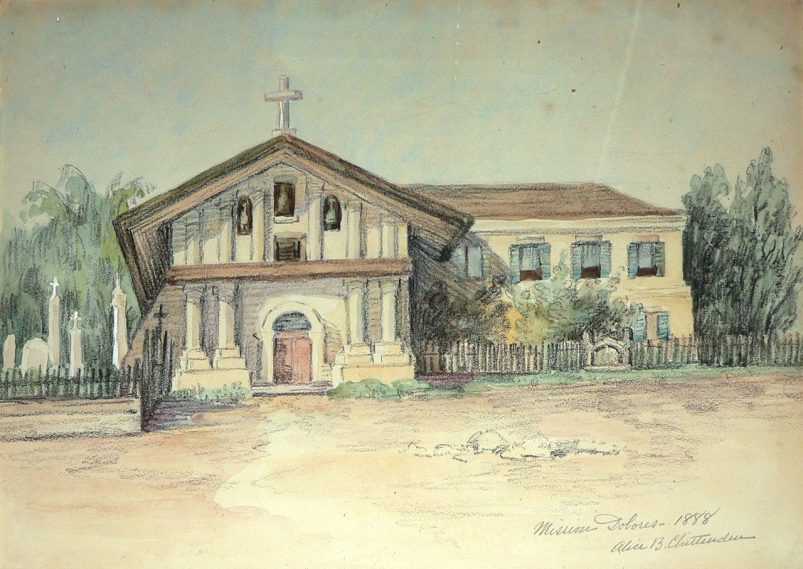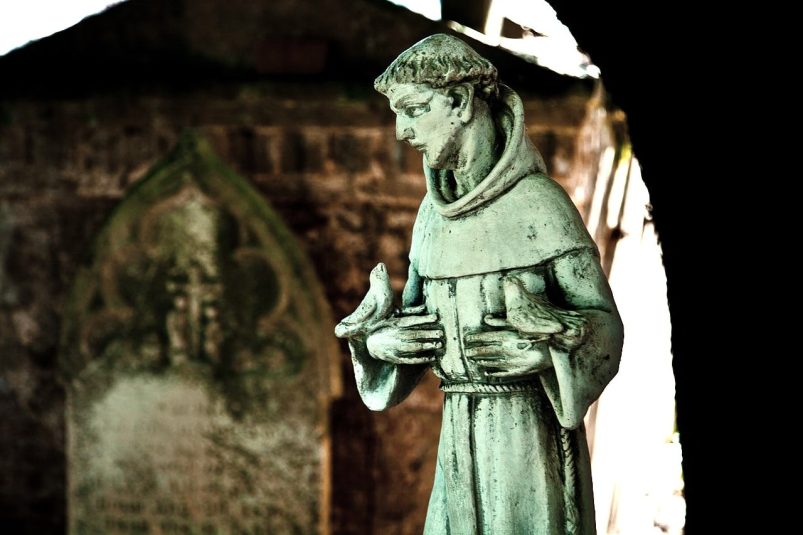The Mission now called Dolores was founded on October 8, 1776. For the dedication of Mission San Francisco de Asís, the Padres chose a site beside a little inlet called Laguna Dolores. The nearby Pueblo was named Yerba Buena. As time went on, the town took the name of Saint Francis, while the Mission became popularly known as Dolores. Even though stationed beside one of the finest harbors in the world, Mission San Francisco de Asís was handicapped from the outset. The lack of suitable space for agriculture, competition for that same space from the citizens of the Spanish Pueblo, and the damp and foggy climate limited its development.
Initially, the Ohlone Indians joined the new San Francisco de Asís Mission in good numbers. But ample food and protection from enemies had to be measured against fatal epidemics of measles, the worldly attractions of the Pueblo, and the free life of “unenlightened” Indian brothers across the bay. Soon, desertions started to threaten the mission’s existence.

Nothing was ever the same after the discovery of gold in California. The population of the sleepy Pueblo rose from a mere 900 to over 20,000 in only a year. Mexican land reforms had taken all the mission possessions, and just a few buildings were left to return to the Catholic Church. Soon, more Irish than Spanish grave markers could be found in the old cemetery.
One of the greatest recorded earthquakes of all time shook San Francisco in 1906, but the thick walls of the old mission church stood firm. Today, it remains the oldest building in San Francisco, that romantic city beside the famous Golden Gate. Inside, the church is not much different than when it ministered to dusky Indian neophytes, an island of peace and calm amid the busy city. The Mission now is called Dolores.

Time seems to stand still at old Mission Dolores. The oldest building in the fabulous city of San Francisco, the mission church came through the great earthquake and fire of 1906 unscathed. Its interior differs little from its original appearance. Decorated redwood ceiling beams remain as created by Indian workmen. Wooden columns remain painted to resemble Italian marble, while they are not. Outside the church, only the old cemetery is as in yesteryear. Modern Mission Dolores Basilica and the teeming city by the Golden Gate crowd around the venerable church, the only remaining mission building.
